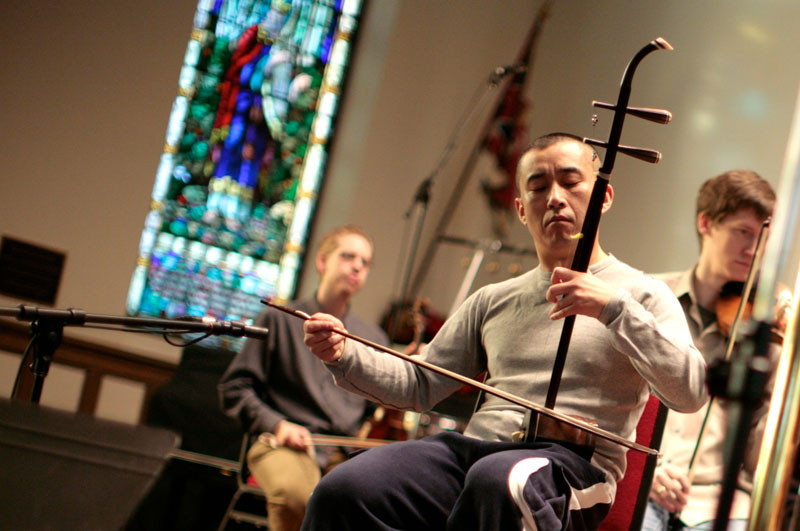Manitoba Chamber Orchestra satisfies audience with sounds from the east
One standing ovation after another standing ovation after another – that was the Manitoba Chamber Orchestra’s Jan. 21 recital in a nutshell.
The audience that filled the baroque chamber of Westminster United Church that evening was treated to the unusual sounds of Chinese instruments, and they responded with the utmost enthusiasm to the incredible performances.
The concert opened with Shuo, a piece composed by Chen Yi, the first woman in China to earn a master’s degree in composition. Combining Chinese mountain songs with Western tonality, the piece was eerily haunting with numerous glissandi (slides) and rapid-paced bowing of single notes above which the melody rode.
The second piece was outstanding. Composed by Xiao-Nan Wang, it brought the audience to its feet, resulting in the composer having to return three times to the stage.
Wang resides in Winnipeg and is a master of the Chinese bamboo flute – something he richly demonstrated that evening. His performance was absolutely breathtaking. The piece, Camel Train in the Desert, was inspired by Wang seeing an elderly Mongolian woman singing to a camel to remind the camel of its duty to take care of its young, which it was refusing to do.
The final piece of the first half was In the Breath of Night by Melissa Hui. It consisted of two movements: the first very introspective and the second very exuberant, with some very interesting deep tonal work by the bassists and cellists and a melody riding on top of a swirling vortex of sound from the violins. The response to the piece suffered from having to follow Wang’s piece, though.
The second half opened with Chen Yi’s Fiddle Suite, consisting of three movements, with each movement composed as a solo for one of three different Chinese fiddles (huqin). To say that the performance of this piece blew the audience away is an understatement.
The suite was performed by George Gao, an erhu master living in Toronto. He employed three different fiddles, one for each movement: the medium-sized erhu, the lower pitched zhonghu and the higher-pitched jinghu. Gao was joined by Wang, with both performing in unison in a manner similar to that of Peking Opera.
The concert concluded with Gao’s composition Capriccio no. 2, Mongolian Fantasy. What a way to conclude a perfect concert.
Published in Volume 63, Number 18 of The Uniter (January 29, 2009)







